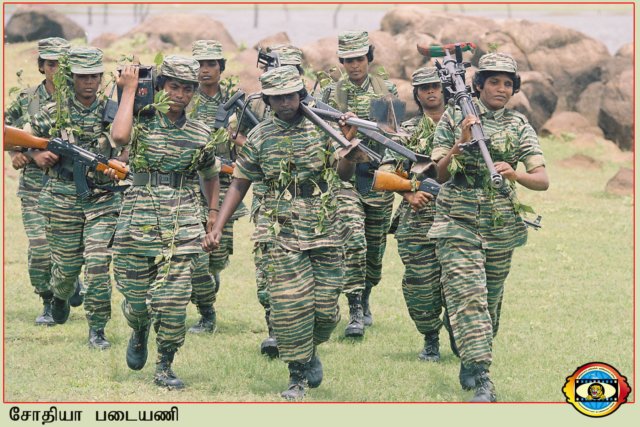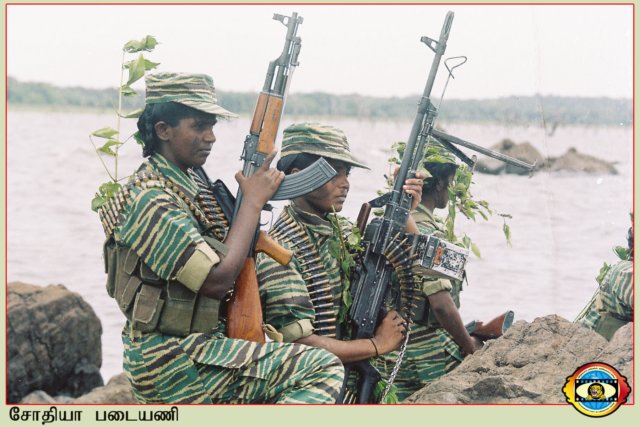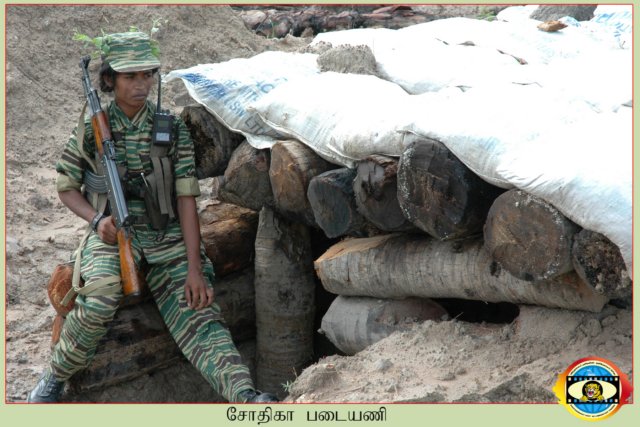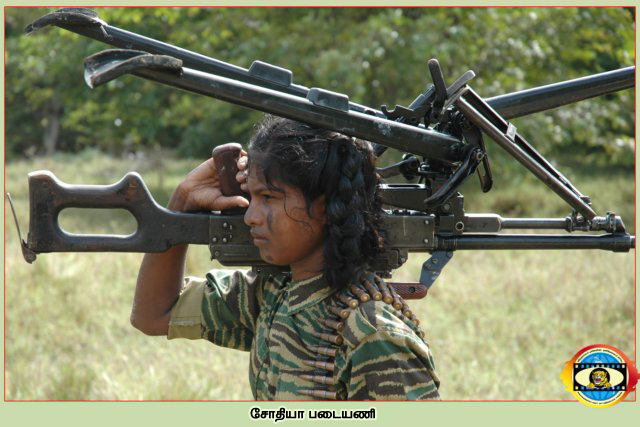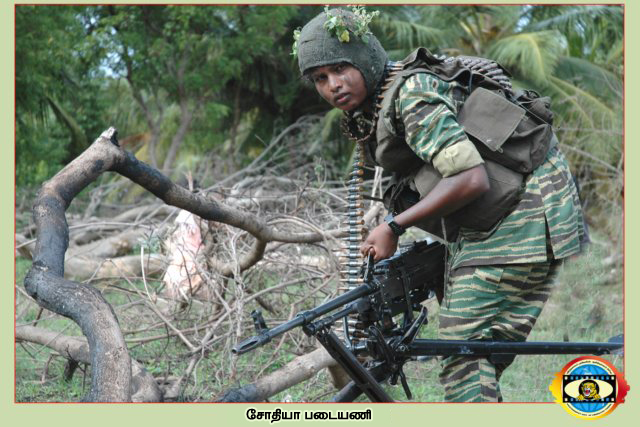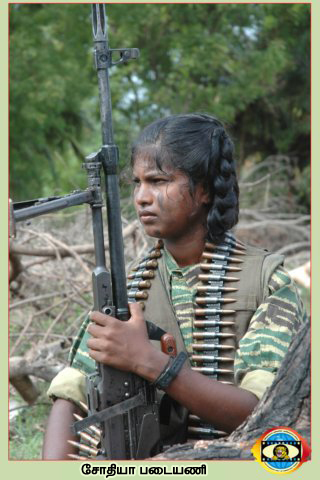Today marks 31 years since the passing of Major Sothiya, the commander of the LTTE's first female unit.
Maria Vasanthi Michael, known by her nomme de guerre ‘Sothiya’, was born on 20 September 1963. She first joined the Liberation Tigers of Tamil Eelam (LTTE) in 1984.
A formidable fighter, Sothiya took part in many battles, as female cadres began to take part in combat operations from 1986 onwards.
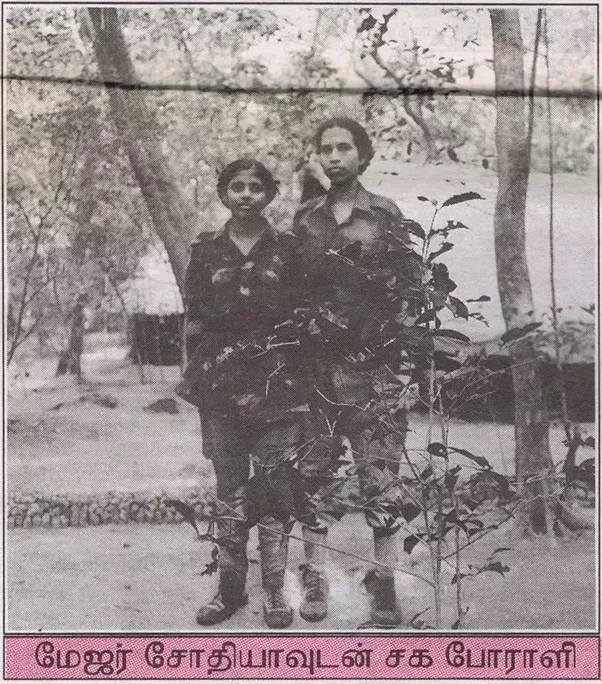
Extracts from Adele Balasingham’s ‘Women Fighters of Liberation Tigers’ below document some of Sothiya’s achievements on the battlefield.
“On one occasion the Sri Lankan army penetrated between two sentry points, surrounded the women on sentry duty and cut them off. The women cadres, totally surrounded by the Sri Lankan troops, fought for their lives. Faced with this life threatening situation the young women, driven by pride and courage, determined to kill as many soldiers as possible before they were killed. They fought fiercely. Ultimately reinforcements came to the assistance of the women and they fought their way out of the situation forcing the army to return to' barracks. Amongst the young women cadres caught up in this deadly battle was Sothia.”
An obituary from Tamilnation.org describes yet another battle and Sothiya's demonstration of courage and leadership.
“A more exemplary demonstration of Sorthia's courage was her involvement in face to face fighting with the Sri Lankan armed forces at the Fort army camp. Sorthia, along with other LTTE guerrillas, stood, face to face, at a range of 25-30 yards and fought the advancing Sri Lankan troops. The troops, unable to withstand the firepower, withdrew to their barracks.”
Sothiya also participated in commando raids, notably a 1987 attack on a military telecommunications outpost in Jaffna.
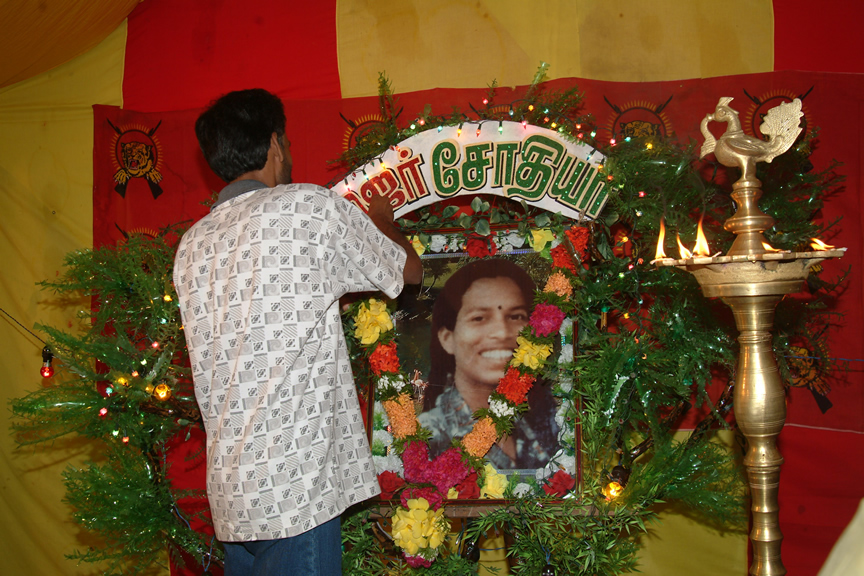
Sothiya's brother pays tribute on the 14th anniversary of her death in Vanni.
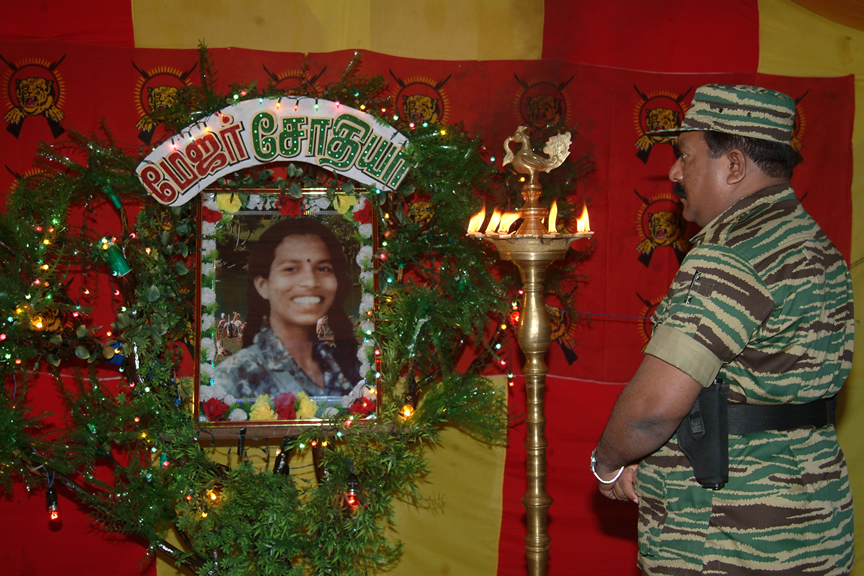
LTTE leader V Prabhakaran pays his respects to Major Sothiya on the 14th anniversary of her death.
See more from Balasingham below.
When the women cadres joined the armed struggle the trajectory of their lives fundamentally changed. They were exposed to new and extraordinary experiences, which, undoubtedly influenced the formation of their thinking. By mid 1989 the increasing number of young women joining the LTTE necessitated reorganisation of the structure and management of the women cadres. The situation was conducive to call for the realisation and implementation of a particular view that the women fighters had been toying with for a very long time. The collective aspiration of the women cadres was the desire for a separate women's military structure. The creation of an independent structure, the women cadres argued, would free them from their over-reliance on the male cadres. Having their own administrative structure, managing their own affairs, making their own decisions based on their knowledge and experience, the women fighters believed, would promote the development of the women cadres. The articulation of such views was itself a clear indication of how much the women had grown in self-confidence. Mr.Pirabakaran appreciated their aspirations and unhesitantly gave his support to the women fighters.
A crucial step towards the realisation of this radical view was the appointment of Sothia as the leader of the women fighters in June 1989. Sothia herself was a strong advocate of an independent women's military structure and worked hard to ensure that the idea did not simply remain within the realm of dreams. Her own personality and history was also a great impetus to the women fighters. Sothia, over years transformed herself into an independent thinker, confident and efficient, capable of leading a women's military structure. Furthermore, she had a wide variety of experience in the LTTE which enabled her to offer advice and assistance on various matters to the cadres under her command. She was known to be a courageous, determined fighter; she had worked in the communication section and medical unit. Most importantly she was popular and respected across the entire spectrum of the LTTE.
The new women's Military Unit of the Liberation Tigers with Sothia as the leader of the Unit was inaugurated on the 26th September 1989. The selected day was the death anniversary of the LTTE hero Thileepan who had fasted to death in 1987. The new office and the training complex was given the name "Vidiyal" which translates into English "dawn" - a new dawn for the women of Tamil Eelam. The first military training programme of the women's Military Unit of Liberation Tigers commenced on the 6th October in 1989.
The building up of the new women's structure was enthusiastically and busily underway when a tragedy struck the women's unit. Sothia, the driving force behind the high morale of the women, suddenly struck down by an aggressive virulent illness. She was moved from the jungles for special medical care but she failed to recover and died on 11 January 1990 after only six months as the Women's Military Unit leader.
She was 26 years old.
Since her passing, thousands of female fighters joined and fought with the LTTE, many having been martyred or injured.
See more photographs of the Sothiya Brigade, named after the fighter, below.
